In my last post, I talked about the factors leading to the development of plant diseases and some common signs and symptoms of fungal, bacterial, and viral diseases. In this installment of the series, I’m going to talk about some of the most common fungal plant diseases with some suggestions for treatment and prevention. This by no means will be an exhaustive list of diseases (there are so many!), but I hope to cover some of the most common ones that we see come into the extension office for diagnosis.
Common Fungal Diseases
- Powdery Mildew
- Symptoms: White powdery spots on leaves and stems
- Common hosts: a wide range of plants, but peonies, lilacs, squashes, cucumbers, and roses are what we see most often

- Downy Mildew
- Symptoms: yellowish or whitish spots on the tops of leaves with gray-ish fuzzy growth underneath
- Common hosts: downy mildew affects many plants, but basil, impatiens, cucurbits, and verbena constitute the most common questions.

- Rusts
- Most rust lifecycles require two host plants: a primary and alternate host
- Common rusts:
- Cedar-apple rust (Junipers– primary, Apple/pear – alternate)
- White pine blister rust (white pine – primary, gooseberry/currant – alternate)
- Hollyhock rust (no alternate host)
- Symptoms: rust colored (orange/yellow/red) pustules or blotches on leaves, stems, and fruit; may appear as gummy structures on primary host


- Leaf Blights
- The most common blights we see are often for tomatoes and their relatives. There are many leaf spots and blights that affect these plants, but early blight seems to be one of the most common.
- Common leaf blights
- Early Blight of tomato: irregularly shaped lesions on leaves, often with concentric rings and yellow halos. Eventual leaf curling, necrosis, or dropping. Severe cases can end up with lesions on stems and fruits.
- Late Blight of Tomato and Potato: Starting as small water-soaked lesions and turning into large, purple-brown, oily looking blotches. Blotches appear on leaves, stems, and eventually fruit.
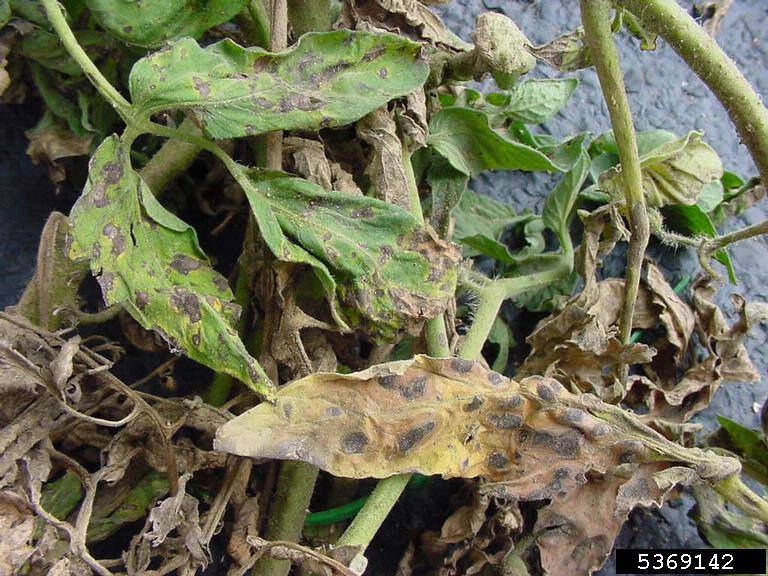
- Anthracnose (multiple species and target species)
- Anthracnose affects a wide range of plants, but we often see shade trees such as oak and sycamore, dogwoods, beans, peppers, and cucurbits as commonly affected plants.
- Symptoms: dark, sunken ulcer-like lesions on leaves, stems, fruits, and flowers.
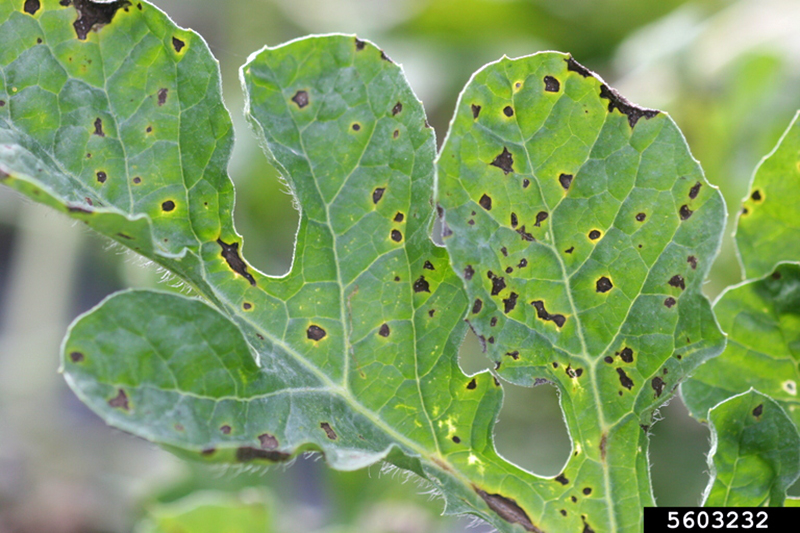
- Cankers
- Common cankers:
- Cytospera – spruce, pine, poplar, willow
- Phomopsis – juniper, Russian olive, Douglas-fir, arborvitae
- Nectria – honey locust, oak, maple
- Symptoms: sunken necrotic lesions (cankers) on twigs, stems, and trunks of trees. Often leading to death of the plant beyond the canker location. This is especially problematic for trunk cankers which often lead to the death of the whole plant.
- Common cankers:
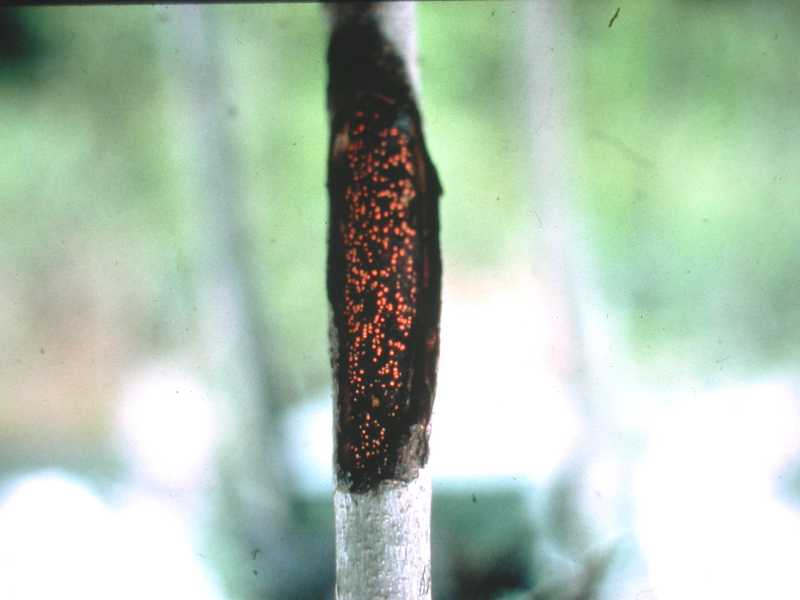
- Root Rots
- Common rots:
- Phytopthora – affects many species to cause root rot
- Armaillaria – especially problematic for trees
- Common rots:
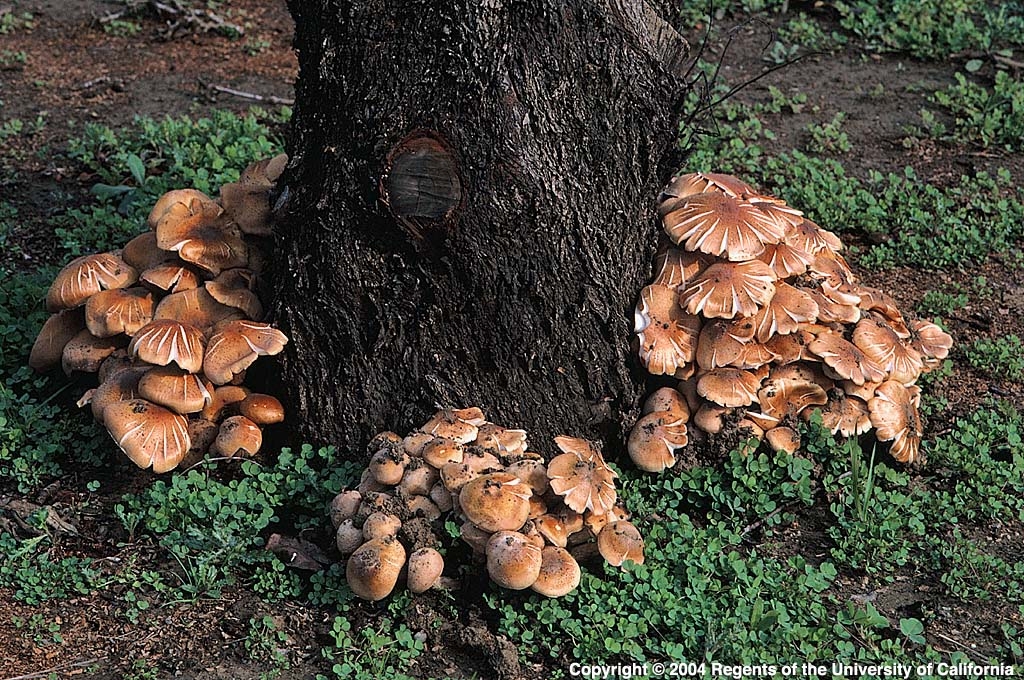
- Fruit rots
- Common rots:
- Black rot – many species, but often apple and pear
- Brown rot – peaches, plums, cherries, and related species
- Common rots:
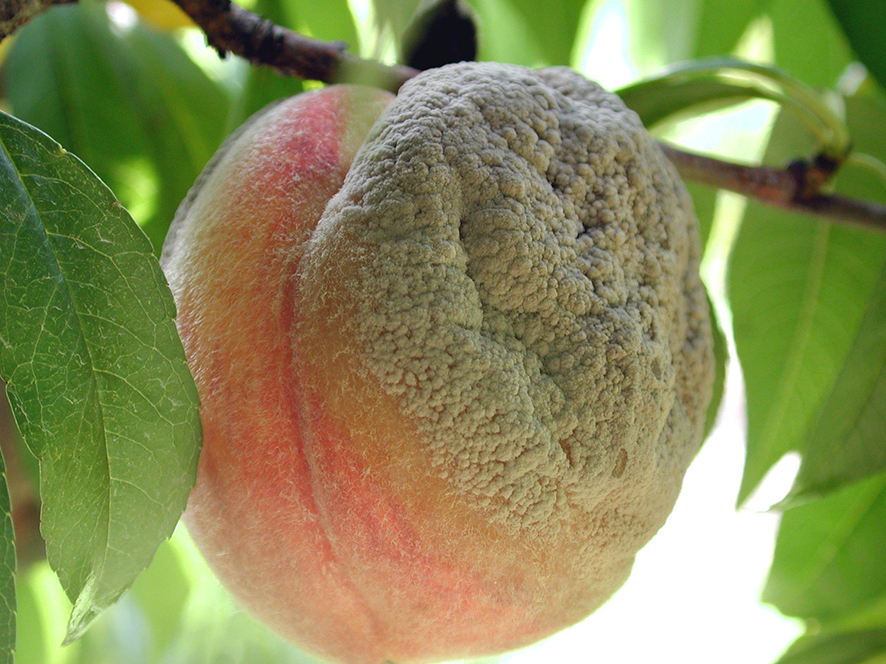
Fungus Treatment
Once a plant is infected with a fungus, it is difficult to eliminate the disease and treatment focus should be on slowing down the spread of the disease to the remaining plant. Treatment is important for annual plants, which may be killed entirely by fungal pathogens, and in woody perennials where symptoms include cankers or rots that affect perennial plant parts such as stems or trunks. Fungal diseases that affect only foliage on perennial plants are less of a threat and often the damage is limited to aesthetics.
For the most part, removal of the diseased plant parts is an important first step in treating the disease. This removes a great deal of the fungal organism from the plant that is likely still producing spores or hyphae to spread through the plant. Removal of affected foliage for foliar diseases is key.
In cankers, removal of whole branches or twigs starting at least a few inches below the canker location is necessary. Sometimes this may require removal of large parts of plants, at which point decisions should be made about removal of the entire plant. Cankers occurring on main stems or trunks are especially devastating.
Once affected plant parts are removed, a treatment with fungicides may be necessary to reduce spread of the disease further. Often repeated treatments through the season are needed once the disease is established in the nearby environment. Copper sulfate is a common organic option for treatment of fungal pathogens, but may not be effective for every disease. Care should be taken to not overuse copper sulfate, as it will not break down in the environment and can build up in the soil, causing damage to populations to good fungi and bacteria in the soil. Chlorothalonil is a widely used conventional fungicide and will help control many, but not all, fungal diseases. For specific fungicide recommendations for your area, contact your local extension expert.
Fungus Prevention through IPM
There are several Integrated Pest Management strategies that can be used to reduce the likelihood of fungal infection in your garden or landscape. Below are some strategies that can be used for general fungal prevention:
- Use correct plant spacing and pruning to ensure airflow around plants. This can reduce humidity within the plant structure and moving air can reduce the number of fungal spores that land on the plant.
- Use mulch to limit splashing of soil onto plants
- Eliminate overhead watering to reduce foliar moisture
- If overhead watering is necessary, water early in the day so plants dry out before the dew point drops in the evening
- When possible, plant disease resistant cultivars
- Reduce nearby weeds to eliminate potential secondary hosts
- Remove rust alternate hosts (not always possible), such as junipers if you’re growing apples (or vice versa)
- Utilize biofungicides as a preventative measure. Products containing different types of Bacillus bacteria can be competitive with disease-causing organisms and limit their ability to form on leaves.
- Practice good hygiene in the garden by cleaning up any fallen or diseased leaves, fruits, etc.
Wrapping it up
There are lots of fungal diseases that can damage or kill plants in our gardens or landscapes. Prevention is key, as treatments only help slow the spread of disease. In the next installment, we’ll talk about bacterial diseases. Stay tuned!
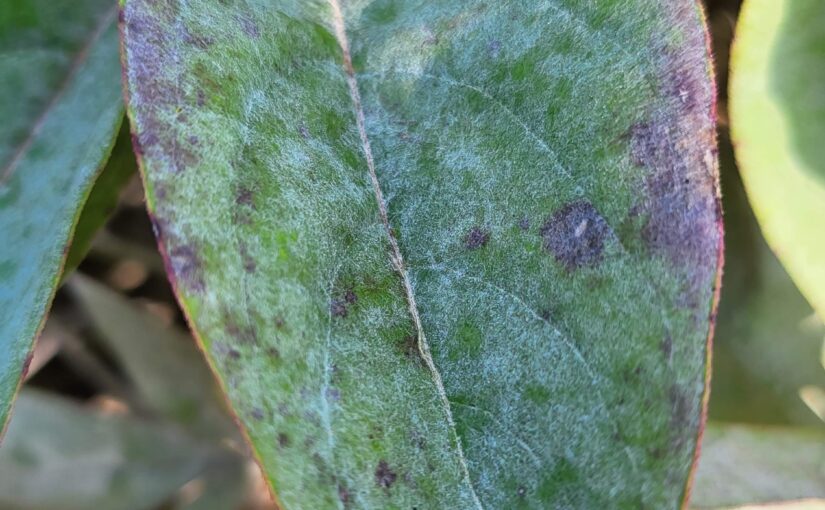
Thanks for the information. Hope it’s ok to print this out for our Master Gardener booth in Vallejo, CA.
Absolutely! We love our information to be used to help MGs educate their clientele.
What about cutting out and disinfecting cankers on tree branches and trunks?
Commonly done by arborists and orchardists.
While it may be commonly done, it is not best practice. Cutting into wood already infected with fungus can further open the tree up to infection by other pathogens. Plus, the damage can disrupt the flow of water up to the rest of the tree, resulting in damage further up the tree. The best practice is to make sure your tree is as healthy as possible -watering, soil testing to determine any nutrient deficiencies, etc – to “outgrow” the canker if possible, or at least survive for longer while infected.
On the topic of biological control of fungi, is there/has there been any research on the use of trichoderma species for the treatment of pathogenic fungi, or even as a prophylactic for things such as tree wounds? It’s something I’ve always wondered about, and would love to see what such studies found.
At this time results are mixed on the effectiveness of the product, field conditions greatly influence success or failure.
Homeowners need not apply or use anything on tree wounds. Exception: if you’re in an active oak wilt area then sealing is still recommended.
Fabulous or rather informative enlightening article. Truly exceptional on the way it is displayed and written. Could not be any easier. People always ask me to provide info on what is that on their leaves. I will be using the article over and over and over